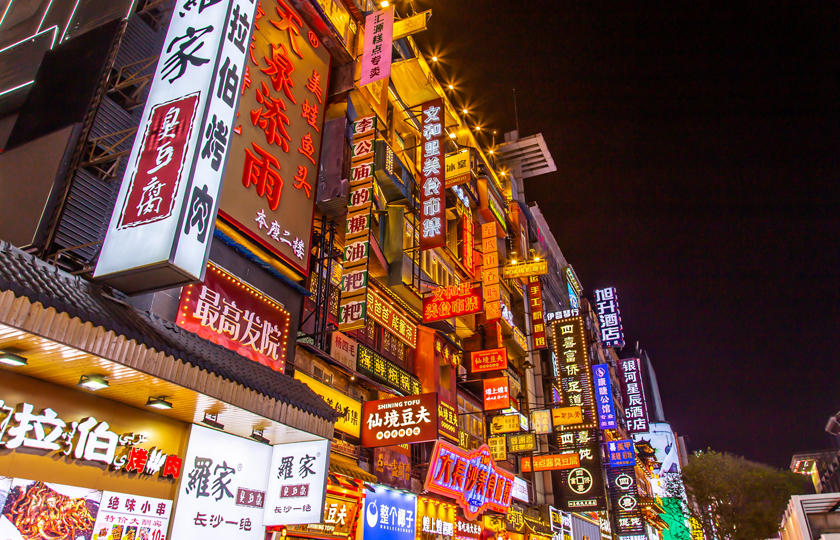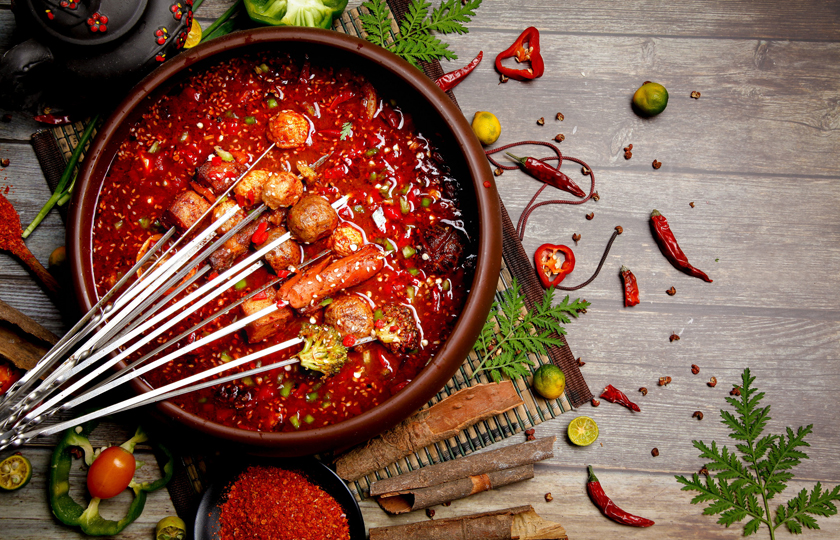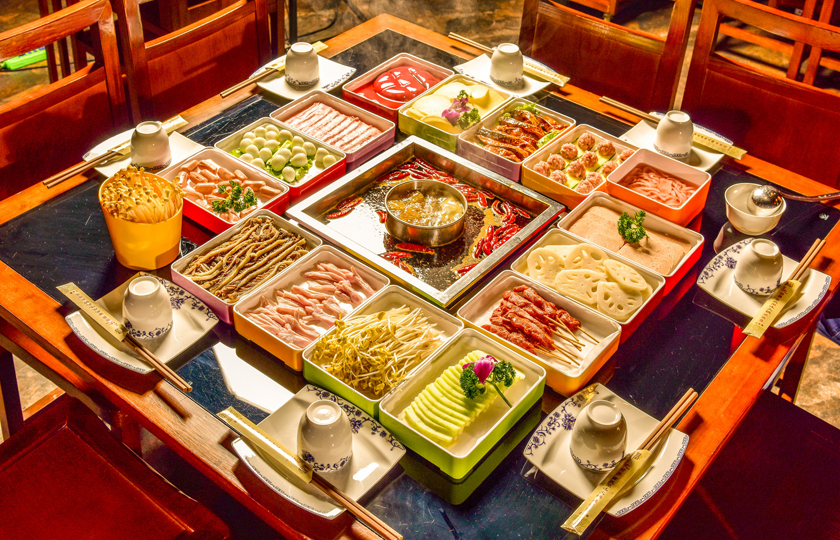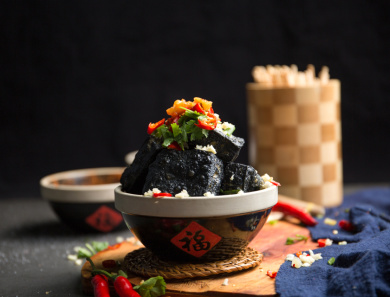The Culinary Gem: What is the foodie capital of China?

The vast land of China gives birth to diverse food cultures. "Where is the food capital of China?" is an intriguing question. Is it the spiciness of Chengdu, the deliciousness of Guangzhou, or the unique flavors of other cities?
Guangzhou
Known for its saying “Eat in Guangzhou,” the city’s dim sum culture is deeply ingrained in local life. The delicate shrimp dumplings, savory siu mai, silky rice rolls, chicken feet, and egg tarts, paired with a pot of hot tea, invite leisurely enjoyment. Beyond dim sum, specialties like clay pot rice, white-cut chicken, roasted goose, and char siu showcase the exquisite flavors of Cantonese cuisine.
Chengdu
As the birthplace of Sichuan cuisine, Chengdu is famous for its spicy and fragrant dishes. Hotpot is a signature dish, with its fiery red broth and an array of ingredients that are simply irresistible. Local snacks like夫妻肺片 (Fuqi Feipian), 担担面 (Dan Dan Noodles), and 龙抄手 (Long Chao Shou) offer unique flavors, while classic Sichuan dishes like Mapo Tofu and Kung Pao Chicken fully display the charm of this cuisine.
Chongqing
Renowned nationwide, Chongqing hotpot features a spicy red oil broth paired with unique ingredients like tripe, duck intestines, and throat. The flavor is both fragrant and intensely spicy. Chongqing noodles are also a local favorite, with chewy noodles and rich seasonings that leave you feeling completely satisfied. Additionally, dishes like spicy chicken and boiled fish are classic representations of Chongqing’s culinary scene.
Changsha
Known as the “most flavorful” city, Changsha is famous for its stinky tofu, which smells strong but tastes delicious, crispy on the outside and tender on the inside, especially when paired with special chili sauce. Other popular late-night snacks include spicy shrimp and river snails. Dishes like stir-fried chili pork, chopped pepper fish head, and sweet glutinous rice cakes are filled with the unique charm of Hunan cuisine.
Xi’an
A paradise for carbohydrate lovers, Xi’an offers a wide array of delights, including meat sandwiches, lamb soup, cold noodles, and oil-splashed noodles. The lamb soup, with its fragrant bread and tender meat in a rich broth, is particularly noteworthy, especially when paired with sweet garlic.
Wuhan
Wuhan's breakfast culture is truly unique, featuring a rich variety of dishes like hot dry noodles, three-flavored bean curd, and beef noodle soup, which are sure to amaze. At night, the city transforms into a food lover’s paradise, offering everything from crayfish to barbecued foods, making it a vibrant hub of culinary delights.
Yangzhou
As the birthplace of Huaiyang cuisine, Yangzhou is known for its exquisite flavors. Dishes like braised dried tofu, delicate tofu soup, and lion's head meatballs are not only delicious but also beautifully presented. The city’s dim sum is distinctive, with crab roe soup dumplings and emerald green siu mai that are sure to impress.
Nanjing
Nanjing's cuisine blends flavors from both the north and south. The salted duck, with its crispy skin and tender meat, is a signature dish. Duck blood and vermicelli soup is also popular among tourists, while dishes like skin-stuffed noodles, soup dumplings, and sweet red bean dumplings reflect the unique culinary character of Nanjing.
Shunde
A paradise for food lovers, Shunde emphasizes the authentic taste of ingredients. Fresh fish is prepared simply to highlight its natural flavor. Unique dishes like steamed fish, fish skin dumplings, and dried fish also stand out, while the congee-based hotpot offers a refreshing twist.
Kaifeng
As the “ancient capital of eight dynasties,” Kaifeng has a rich culinary heritage. From soup dumplings and lamb-filled pancakes to stir-fried cold noodles, there’s an abundance of snacks to enjoy. Traditional Henan dishes like grilled carp and Kaifeng roast duck provide a taste of the flavors enjoyed in ancient royal courts.
A Food Lover's Guide to Chengdu, China
If you're a foodie in Chengdu, it's like stepping into a culinary paradise, with countless delicious dishes waiting to be explored. Here’s a curated guide for food enthusiasts visiting Chengdu:
Must-Try Dishes:
Hotpot: Chengdu hotpot is famous for its spicy and fragrant flavors. With options like beef tallow and clear oil for the broth, and a variety of ingredients including tripe, duck intestines, and throat, it's a must-try. The cooking technique involves specific timing—like “seven up, eight down”—to ensure the best texture. Recommended spots include Shu Da Xia Hotpot and Xiao Long Kan Hotpot.
Chuan Chuan: This is a skewered version of hotpot, where various ingredients are threaded onto bamboo sticks and cooked in the broth. There are cold and hot varieties; the cold version is prepared in a special broth after cooking, while the hot version is cooked by diners themselves. Popular places include Yulin Chuan Chuan and Gangguan Factory No. 5 Chuan Chuan.

Rabbit Heads: A unique Chengdu snack available in spicy and five-spice flavors. The rabbit heads are carefully prepared and cooked, offering a delightful taste that’s worth trying. Options like Shuangliu Laoma Rabbit Head and Deng’s Rabbit Head are great choices.
Long Chao Shou: Similar to wontons, but with thinner skins and more filling. Long Chao Shou has smooth wrappers and juicy fillings, paired with a special red oil sauce that balances sour, sweet, spicy, and numbing flavors.
Dan Dan Noodles: Thin noodles topped with a special sauce and stir-fried minced meat, this traditional dish features rich broth and delicious flavors.
Mapo Tofu: One of Chengdu’s signature dishes, made with soft tofu and a special chili bean paste that melts in your mouth, delivering a spicy and aromatic experience.
Sweet Water Noodles: Thick, chewy noodles tossed with brown sugar, sesame paste, and crushed peanuts, offering a unique combination of sweet and spicy flavors.
Fuqi Feipian: A dish made with beef and beef tripe, dressed in chili oil and Sichuan pepper, providing a deliciously spicy and aromatic experience.
Sugar Oil Balls: Made with glutinous rice, brown sugar, and sesame, these deep-fried treats are crispy on the outside and chewy on the inside, offering a sweet crunch.
Food Streets:
Kuixing Tower Street: One of Chengdu's famous food streets, bustling with restaurants and snack stalls. Try the spicy skewers at Maojiao Hotpot, a popular "fly restaurant" known for its flavorful dishes. Other snacks like sugar oil balls and egg pancakes are also available.
Yulin District: A trendy area for the artsy crowd, featuring many unique food spots. Here you can find a variety of hotpot, barbecue, and Sichuan cuisine that caters to different tastes.
Wangping Street: This lively area offers a mix of traditional Chengdu dishes and trendy eateries. Try the nourishing pig trotters at Xiao Mei Zibu, known for their rich and flavorful broth.
Tangba Street: Filled with local eateries, it’s a great place to experience authentic Chengdu flavors, including traditional Sichuan restaurants and innovative dining options.
Jianshe Road Pedestrian Street: A hotspot for street food, this vibrant area is packed with Chengdu specialties like roasted sweet potato skins, crispy potato chips, and various snacks, making it a paradise for food lovers.

Culinary Culture Experience:
Tea House Culture: Chengdu’s tea houses are found throughout the city. Enjoy a cup of lid-covered tea while savoring snacks like sunflower seeds and peanuts, and immerse yourself in the leisurely Chengdu lifestyle. Many tea houses also host traditional performances like Sichuan opera and storytelling.
Night Market Snacks: The night markets in Chengdu come alive in the evening, offering an array of street food that showcases the city’s nightlife. Places like Xipu Night Market and Banbian Street Night Market feature many local delicacies and food stalls.























